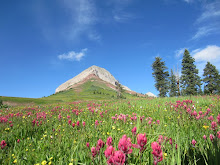During a recent work meeting with the western renewable energy zones group, it became clear the recent push for renewable energy in the western US has major wildlife and environmental implications.
The main issues of public land managers and wildlife stakeholders are the new roads and infrastructure placed on previously undisturbed public lands. The western US has huge potential for renewables such as solar, wind, and geothermal. Just like the fossil fuel energy booms of the past, the rush to build these renewable power plants on public lands would adversely effect wildlife corridors and ecosystems.
These issues have me thinking more about the economic and environmental benefits of the distributed nature of solar technology. Wind and geothermal power only work in particular areas of the US, in most cases far away from the end electric user. Also the wind and geothermal resources are mainly on undisturbed public lands.
Solar, on the other hand, can work anywhere. Some solar application works best in high light, hot areas like the desert southwest, whereas other solar applications work best in cooler defused light areas of the country. I started to think about all the land masses in the US that are already disturbed or used, and could be levered as solar energy resources.
Commercial Rooftops
New solar firms like Solyndra produce thin film solar technology especially for commercial rooftops. In only commercial applications we could supply the US with 25% of all our electric needs from these rooftops. Solyndra has entered into a contract with ENERGY STAR®-certified cool roof systems from Carlisle Construction Materials. This combination of the reflective roofing membrane with Solyndra's solar systems, increases the output of the Solyndra PV system up to 20%.
The above estimate of 25% of the US electric grid is based on the approximate efficiency ratio of 15% for Solyndra's PV system. These solar thin film technologies are still in the early stages of development, so over time we should see significant improvements in efficiency and cost.
Already solar thin film firms can produce solar energy at grid parity. These cost breakthroughs in solar have been achieved by focusing on the cost side, not the efficiency side. These new thin film solar technologies are less than half as efficient as silicon based solar cells, but can cost 80-90% less to produce. My article on solar economics describes in more detail the different solar technologies and the economic considerations.
So with commercial rooftops, the US could replace more than 25% of the grid. What about other brownfield land solar development? While driving many hours across the desert southwest on interstate I-15 it hit me.
Highway right of way solar - ROW solar
On both sides of I-15 all one can see is scrub, weeds, debris, and power lines. Highway departments must keep their right of way clear of invasive weeds such as Russian thistle(tumbleweed), cheat grass, etc. Mowing or pesticide spaying operations are the most common methods. Instead of spending all those tax payer dollars trying to control photosynthesis, why don't we use photosynthesis to create electricity along these highways?
By designing the proper alignment of solar systems along these highway, land managers could also funnel wildlife away from dangerous highway crossings and into safe wildlife corridors. In the desert southwest, miles of small fences are built along highways to protect the desert tortoise from getting killed by cars. Larger structural solar systems could also protect larger animals such as cattle, deer, and antelope. These larger animals also cause many serious accidents and human deaths on our highways.
How much acreage are we talking about? The first estimate to consider is the amount of land that highway departments currently manage. This is a small subset of all right of way highway acreage. Road Ecology: Science and Solutions written by Richard T. Forman in 2002 is a good source of information on managed right of way land along our nations highways.
Forman's book states that California manages 230,000 acres of right of way on 15,000 miles of highway, about 15 acres per mile of highway. In the US we have about 4 million miles of roads, or 60 million acres of right of way to manage. On many sections of highways in the western US, the highway right of way is contiguous to federal land like the BLM. By using a small amount of this BLM land, we could easily double the amount of land available for solar energy.
Depending on the particular solar technology, one needs 2-4 acres of land to place a 1 megawatt solar power system. So a conservative estimate for US highway solar would be 20 million megawatts of total capacity.
In 2006 the existing US capacity for electricity was about 1 million megawatts. So just in the disturbed land along our nation highways, we could have almost 20 times more capacity then currently installed. Here are some energy figures from 2007:
The U.S. electric power industry's total installed generating capacity was 1,089,807 megawatts (MW) as of December 31, 2007.
Total U.S. electricity generation was 4,159,514 gigawatt-hours (GWh).
The capacity of different power plants will produce different amounts of total electric generation. A coal or natural gas fired plant can run almost all the time. A solar power plant may only average 8 hours a day of energy generation. So the real effective electric generation for the 20 million megawatts of highway solar capacity would be about 7 million megawatts of full generation capacity. This is 7 times the electricity we currently consume in the US.
In summary, right of way highway solar is a great solution to our nations energy needs, as well as reducing costs to manage these right of ways. Another benefit would be to help wildlife managers create wildlife corridors for both human and wildlife safety. Lets preserve our undisturbed public lands by implementing solar technologies on these existing managed lands.
Tuesday, December 9, 2008
Subscribe to:
Comments (Atom)
